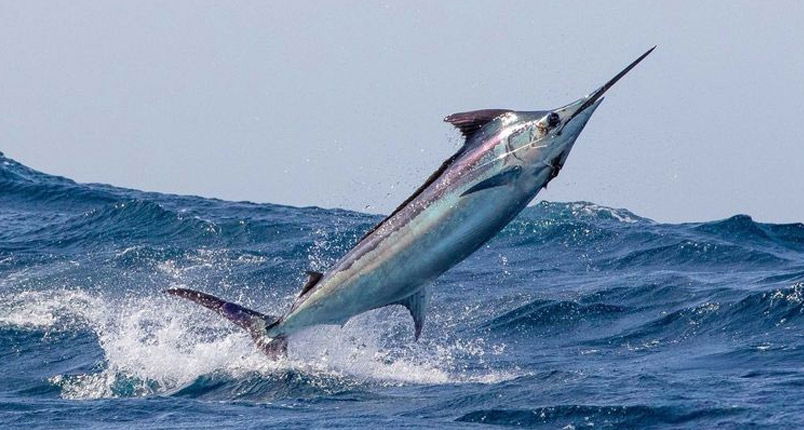On average, blue marlin are the largest of all billfish species. While the largest fish caught was a black marlin weighing in at about 726 kg (1,600 lb), blue marlin are believed to have a potential maximum weight of nearly one ton! It is important to note that all trophy-sized blue marlin are females, as they grow much larger than males. Females can reach sizes of 3.6 m and 907 kg (12 ft and 2,000 lb), while males have a maximum size of 2.1 m and 317 kg (7ft and 700 lb). Atlantic and Indo-Pacific blue marlin are about the same size, with Atlantic blue marlin being slightly larger. The largest blue marlin caught weighed in at 624 kg (1,376 lb).







